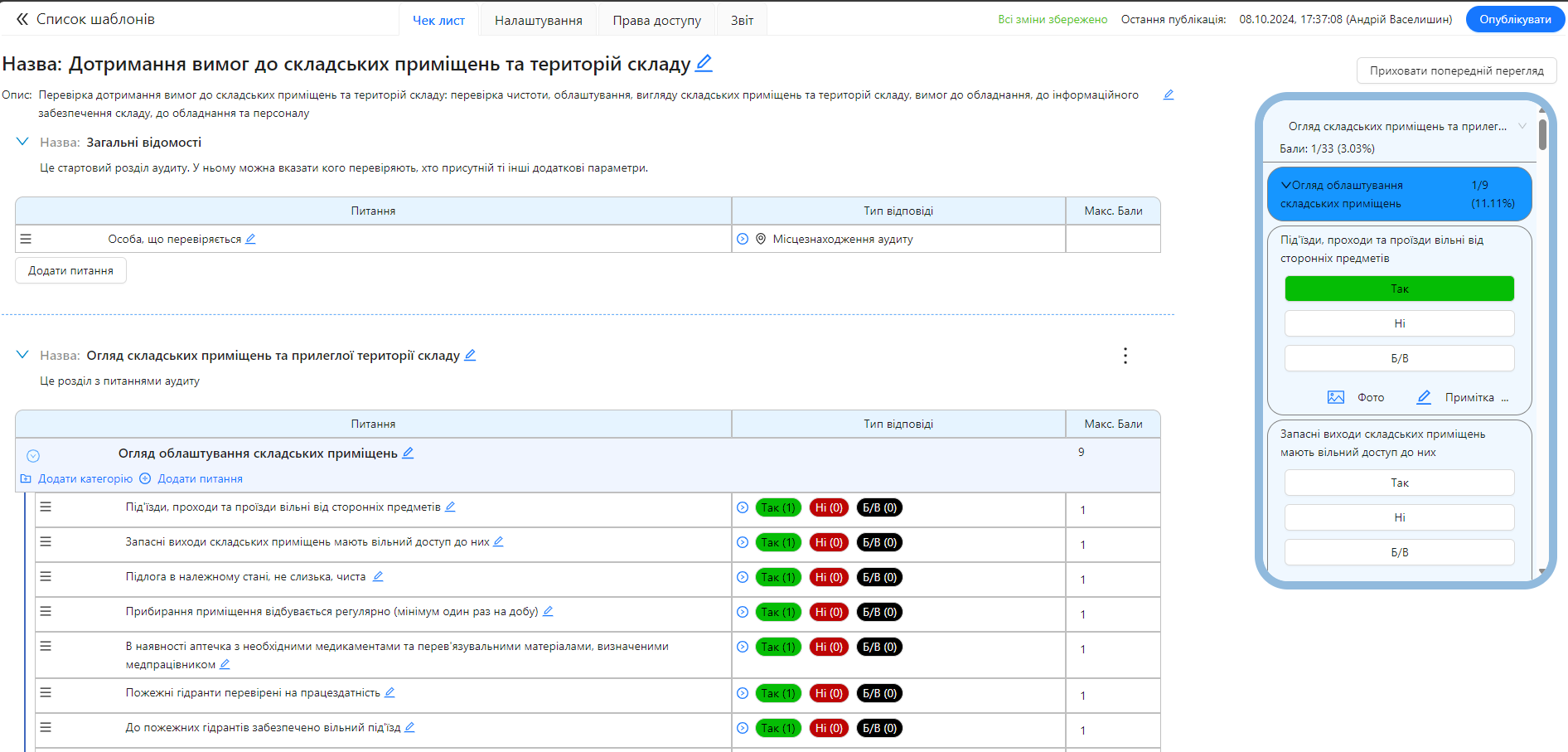Assigning an Audit Template
An audit template in the AuditBLOOM system is a predefined structure that includes all necessary parameters for conducting an audit. It is used to standardize the inspection process and ensure that all audits comply with company requirements or regulatory standards.

One of the roles:
- Administrator
- Template Management
Type of workspace:
- Full workspace.
Step-by-Step Guide
Why an Audit Template is Needed
A template allows you to create audits quickly and efficiently using a standard set of questions, checks, and parameters. This reduces errors and ensures that all necessary aspects are reviewed during the audit.
What an Audit Template Includes
A template typically contains:
- A list of questions to be answered.
- Template settings.
- Access settings for the template and audits.
- Report layout settings.
Standardization of the Process
Assigning a template ensures that each audit follows the same structure. This enables comparison of results from different audits and helps identify trends or issues early.
Versatility of Templates
Audit templates are versatile and suitable for any type of business. Regardless of your company's area of activity, you can use different templates for various types of audits, adapting them to your needs.
- After editing a template, don't forget to publish it so the changes take effect immediately.
- Ensure your templates are updated to reflect new standards or changes in regulatory requirements.
Frequently Asked Questions (FAQ)
Question: Why is it important to use audit templates?
Answer: Templates standardize processes and reduce errors, ensuring comprehensive coverage of all critical aspects of an audit.
Question: Can I edit a template after it is created?
Answer: Yes, a template can be edited, but changes may affect already assigned audits. Make sure the changes do not cause confusion.
Question: How many templates can I create?
Answer: You can create as many templates as needed.
Question: Do I need to create a separate template for each audit object?
Answer: No. You can use the same template for multiple audit objects.